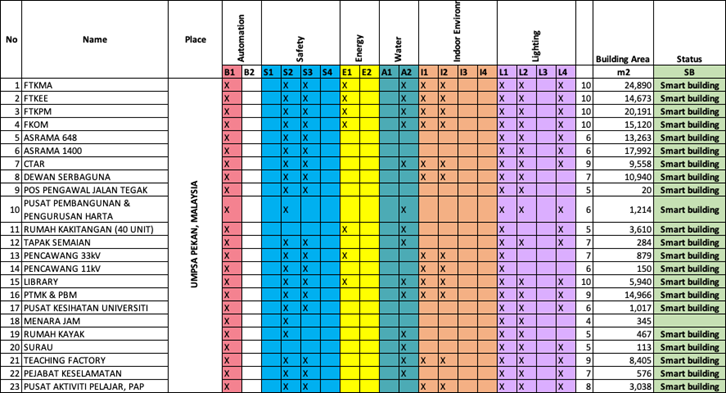Smart Building Elements
One building could be classified as a smart building if it has a minimum of 5 features (UI GreenMetric 2018: Energy and Climate Change Guidelines for Compilation’, bu RUS Energia, 2019). At UMP we have 6 building that full fill at least those 5 criteria as per table below that is cover 382,855m2.
Table 1: Buildings on Pekan Campus that fullfill the Smart Building criteria.

Table 2: Buildings on Gambang Campus that fullfill the Smart Building criteria.

Smart buildings incorporate advanced technologies to improve efficiency, comfort, and security. Here are some key elements that contribute to their functionality:
- Building Management Systems (BMS)
Centralized systems that monitor and control various building operations, including HVAC, lighting, and security. - Smart Lighting
LED lighting systems that can adjust brightness based on occupancy and natural light levels, often controlled via mobile apps or automation systems. - Energy Management Systems
Tools that track energy consumption and optimize usage, helping to reduce waste and lower costs. - Automated HVAC Systems
Heating, ventilation, and air conditioning systems that adjust automatically based on occupancy and weather conditions to enhance comfort and energy efficiency. - Security and Access Control
Smart security systems that include surveillance cameras, alarm systems, and access control via mobile devices or biometric identification. - Smart Appliances
Energy-efficient appliances that can be monitored and controlled remotely, contributing to overall building efficiency. - Sustainable Design Features
Elements such as green roofs, rainwater harvesting systems, and solar panels that enhance sustainability and reduce environmental impact.

